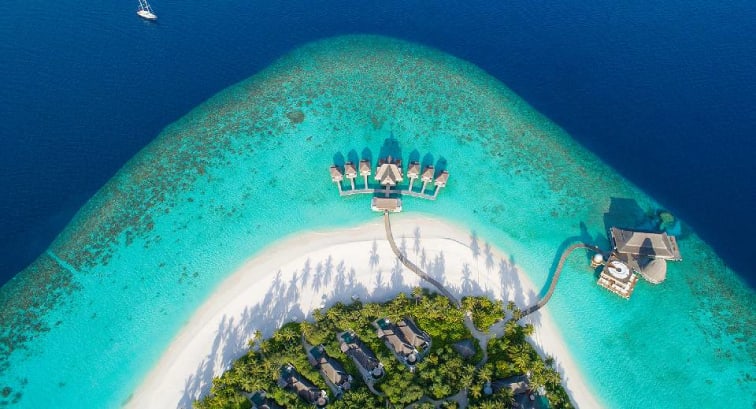The Angels of the Sea
You dive into the Maldivian blue safe in the knowledge that manta rays don’t prey on amateur underwater photographers. Unlike small fish and plankton, you needn’t worry about getting swept into a gaping mouth with pinball flippers affixed to the front of a giant creature’s head. And yet the moment a rhomboid shape glides by, your anxious flippers-clad legs disloyally put some extra distance between you and the ravenous giant.
Which is just as well because here, at Hanifaru Bay, a UNESCO Biosphere Reserve in the Maldives, touching, stroking or even getting too close to the mantas is prohibited and there are trained rangers monitoring your moves. Scuba divers grudgingly give up oxygen tanks and don the pedestrian snorkelling gear, so everyone is on equal footing at what is the world’s largest manta ray feeding station known to exist.
Amid the feeding frenzy and bumper-to-bumper mantra ray traffic at Hanifaru Bay, you can be excused for feeling like a basal species swept up in an energy cycle of a complex food chain. After all, you are technically gate-crashing a dinner party for giants who, with a total local population of around 5,000, dominate these waters, vastly outnumbering our own kind.
With optimum wind and tide conditions (June to November), the bay plays host to feeding aggregations of over 150 mantas — sometimes with a whale shark or two joining in on the feast — gorging themselves in the plankton-rich waters of a shallow cul-de-sac in the reef.
Gliding and barrel rolling in formation through dense clouds of plankton, from a distance mantas look like flying carpets rolling in the sea (some liken them to B-2 bombers, but it’s a matter of perspective.) Despite their intimidating size (up to 7 metres wide), the creatures move smoothly and gracefully. But make no mistake; coral-reef ballet this is not. Due to the confined space and sheer numbers, it’s a gleeful free-for-all.
Feeding on the crumbs off the giant’s table are striped cleaner wrasses and large swarms of blunt-headed and moon wrasses who work the Hanifaru “cleaning station”. A form of symbiosis, manta rays’ periodic visits to the cleaning stations benefit both sides — the cleaning fish gains a food source from the ray, while mantas are cleansed of dead skin cells and parasites.
If getting up close and personal with Hanifaru Bay’s charismatic megafauna left you hungry for more aquatic encounters, the marine biologists at Anantara Kihavah Maldives Villas will take care of the introductions.
From “Dolphin Discovery” on Baa Atoll to snorkelling with hawksbill turtles to “Marine Photo Adventure” capturing the amazing marine life of the coral reefs nearby, with every passing day you will feel more amphibious and less like a fish out of water. Just don’t hold your breath waiting to be invited to the next manta feast. Humans will never be cool enough.
Curated for You
You Might Also Like





.png)